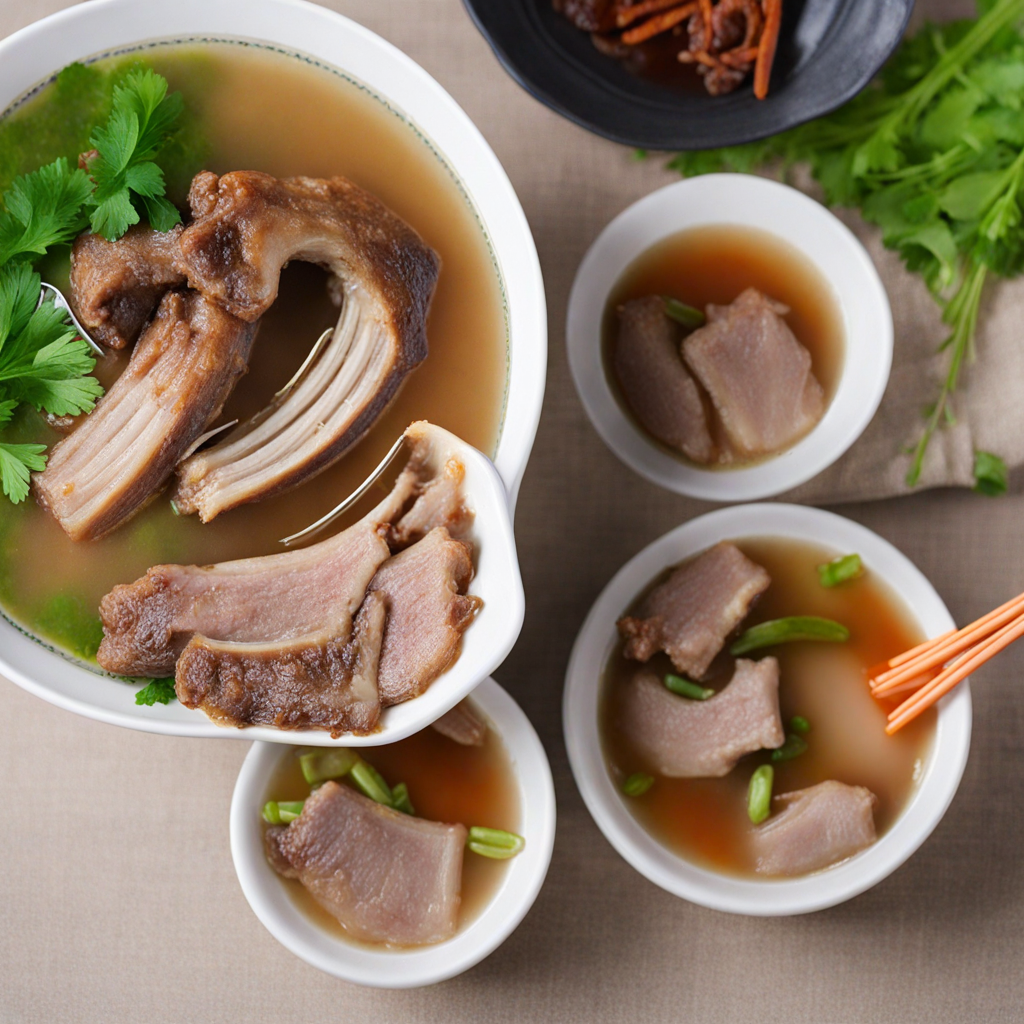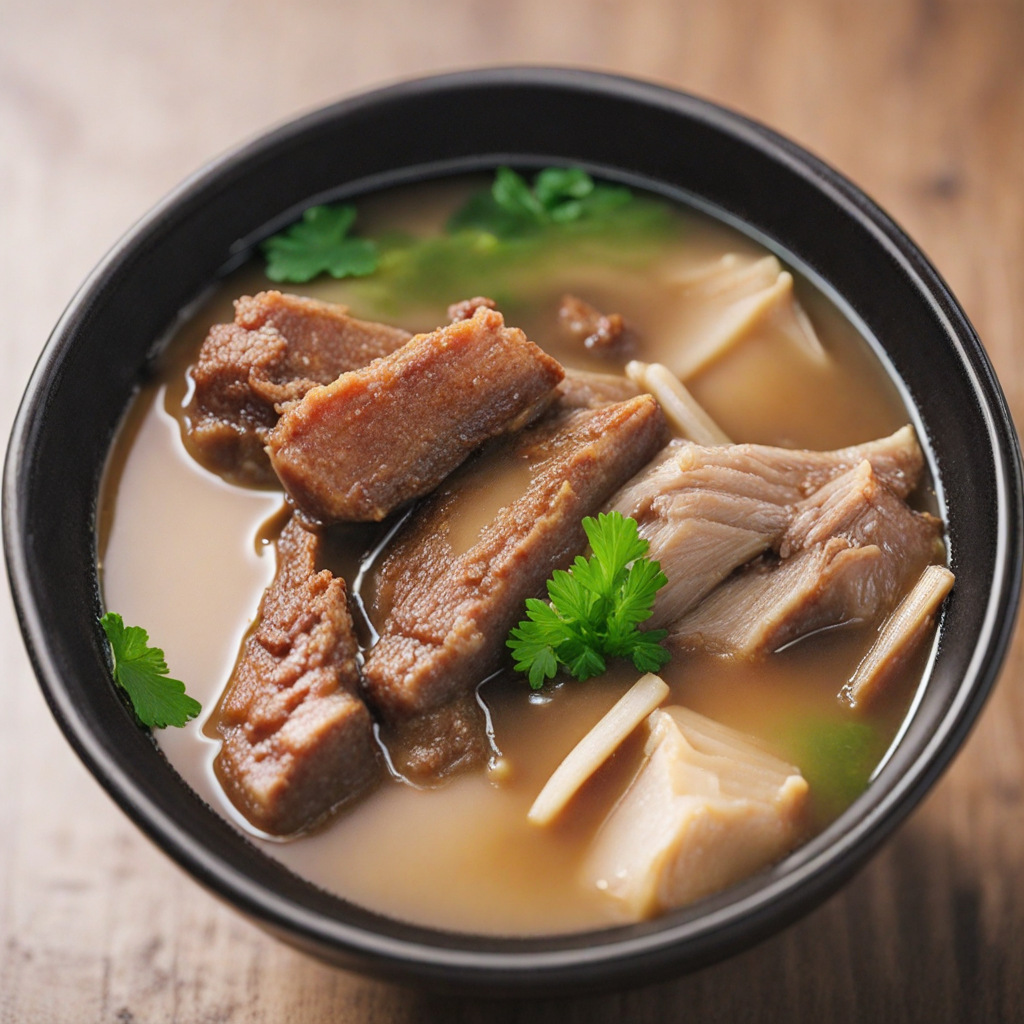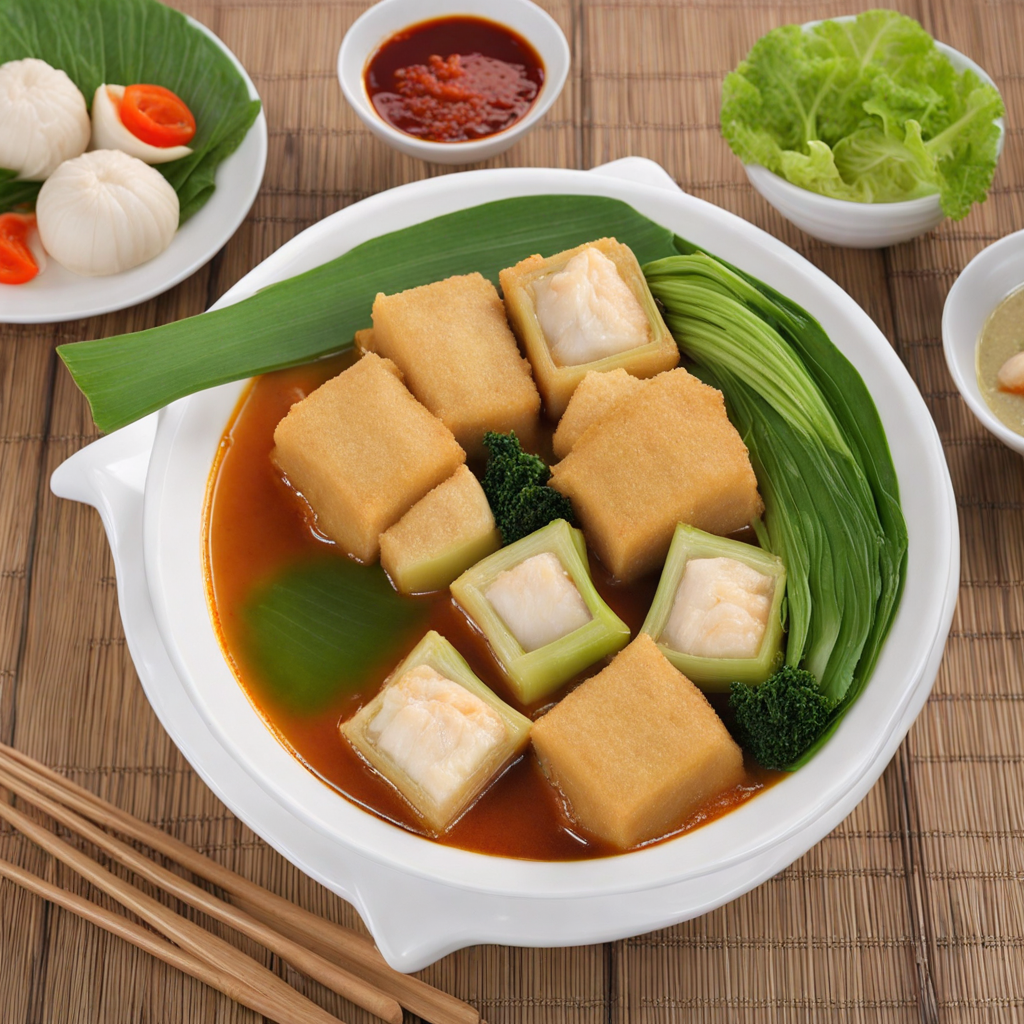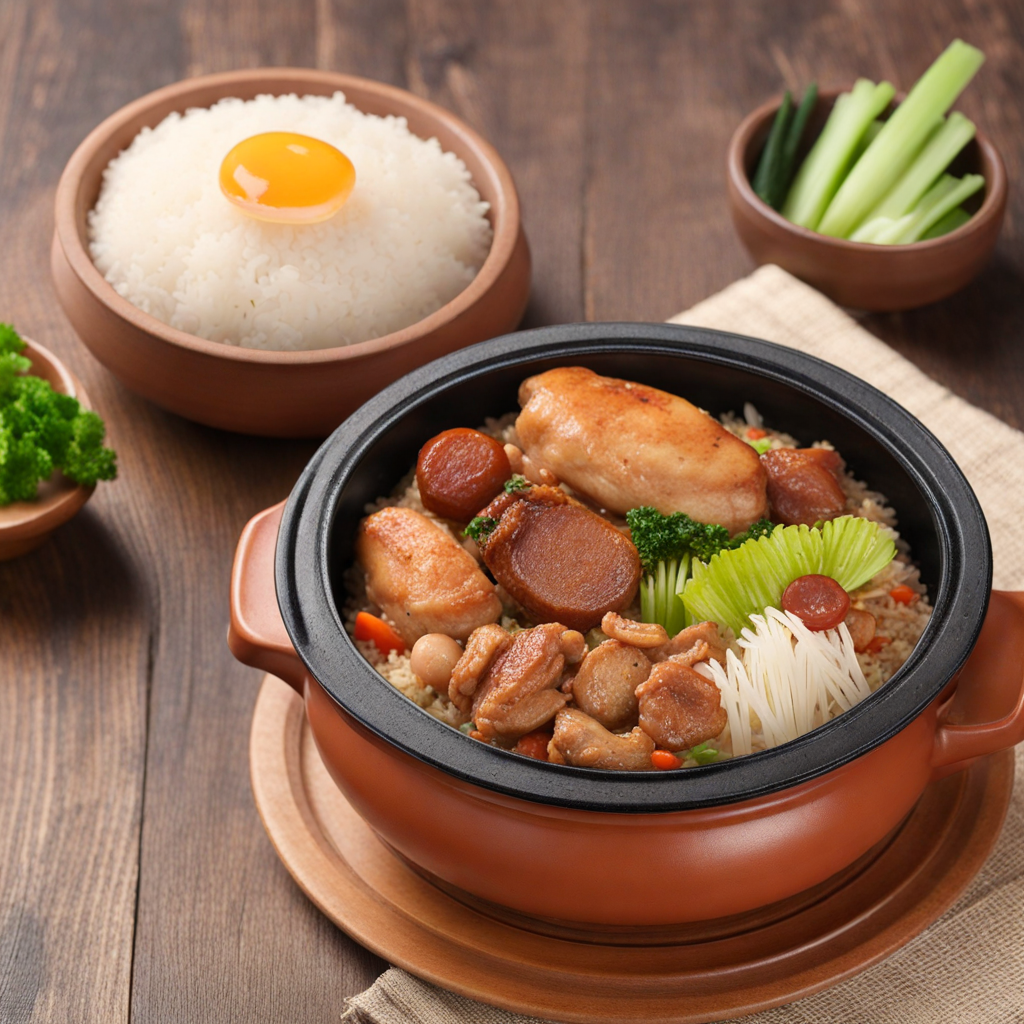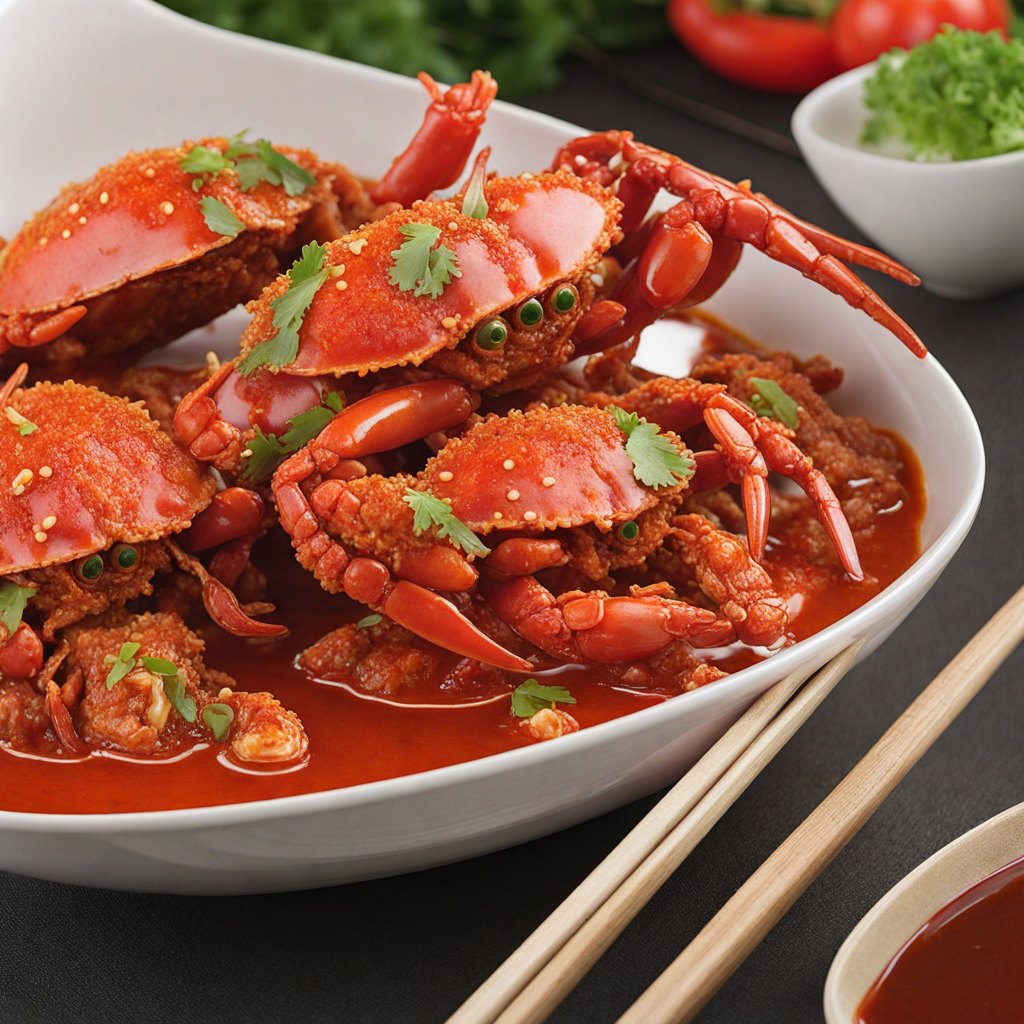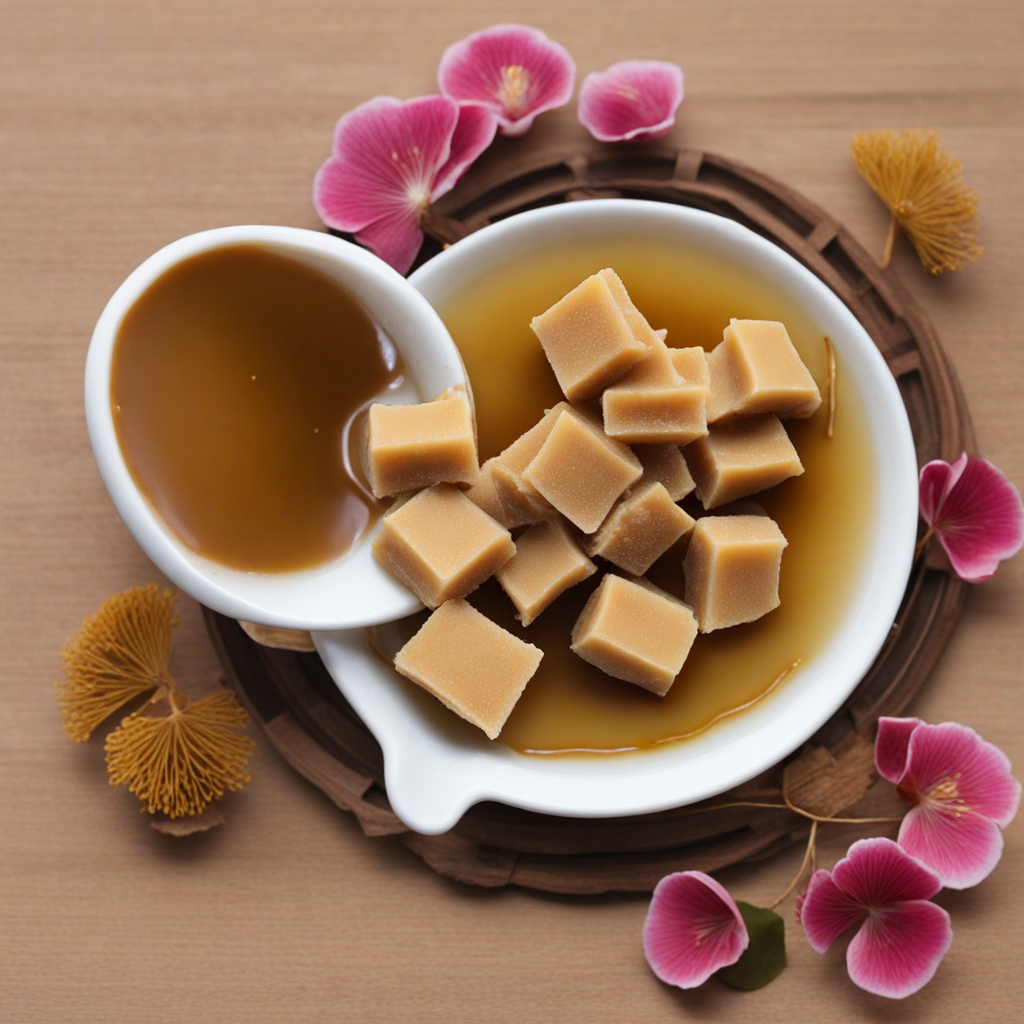Pork Rib Soup
Pork Rib Soup, also known as 'Bak Kut Teh' in Singapore, is a hearty and aromatic dish that showcases tender pork ribs simmered in a flavorful broth. The soup is typically infused with a blend of spices and herbs, including star anise, cloves, and garlic, creating a fragrant and savory base that warms the soul. The pork ribs are meticulously cooked until they are fall-off-the-bone tender, allowing the rich flavors of the meat to meld beautifully with the broth. Each spoonful offers a comforting experience that is both nourishing and satisfying, perfect for any time of the day. The preparation of Pork Rib Soup often involves a lengthy simmering process, allowing the spices to fully develop and the pork to absorb the deep flavors of the broth. It is traditionally served with a side of steamed rice, pickled vegetables, and a dipping sauce made from soy sauce and chili, which adds a delightful kick. The contrast of the tender, juicy meat against the robust and aromatic soup makes for a delightful culinary experience that is both memorable and indulgent. Pork Rib Soup is not just a dish, but a cultural experience that embodies the communal spirit of Singaporean dining. It is often enjoyed in local eateries, where families and friends gather to share their meal, making it a quintessential part of the country's food scene. The dish can vary in style from herbal variations to peppery ones, allowing for personal preferences and regional twists. Each bowl of Pork Rib Soup tells a story of tradition, flavor, and togetherness, inviting anyone looking to explore new tastes to dive into this deliciously comforting dish.
How It Became This Dish
The History of 排骨汤 (Pork Rib Soup) in Singapore Origins and Influences 排骨汤 (Pork Rib Soup), often affectionately referred to as “Bak Kut Teh” in many parts of Southeast Asia, is a dish that embodies the fusion of cultures that characterizes Singapore’s culinary landscape. The origins of this beloved soup can be traced back to the late 19th century when Chinese immigrants, particularly those from the Hokkien and Teochew communities, began to settle in Singapore. They brought with them a wealth of culinary traditions, and Bak Kut Teh was one of them. The name “Bak Kut Teh” translates directly to “meat bone tea,” a reference to the primary ingredient—pork ribs—and the method of preparation that often involves simmering the meat in a broth that is rich with herbal and aromatic flavors. The dish was initially created as a hearty breakfast option for laborers, providing them with the energy needed for their demanding work in the rubber plantations and docks of Singapore. The soup’s base typically includes a variety of spices and herbs, such as star anise, cinnamon, and garlic, which were believed to have medicinal properties. Cultural Significance Bak Kut Teh quickly gained popularity not only among the Chinese community but also among Singaporeans of various ethnic backgrounds, becoming a staple in the local food scene. Its cultural significance extends beyond mere sustenance; it represents the spirit of sharing and togetherness that is deeply rooted in Singaporean society. Families and friends often gather around a steaming pot of Bak Kut Teh, making it a dish that fosters camaraderie. The soup is often served with rice, youtiao (Chinese crullers), and a side of dipping sauces, which adds to its communal nature. This aspect of sharing food is integral to Singapore’s multicultural ethos, where food is a means of connection among diverse communities. The dish is also served in various styles, reflecting the regional preferences of different Chinese dialect groups. Hokkien versions are typically peppery and robust, while Teochew variations are lighter and often emphasize herbal flavors. Development Over Time As Singapore evolved into a bustling metropolis, so did its culinary landscape. Bak Kut Teh began to adapt to the changing tastes and preferences of a more cosmopolitan populace. The post-war period marked a significant transformation for the dish, as the influx of tourists and expatriates introduced new ingredients and interpretations. This led to a diversification of Bak Kut Teh styles, including the emergence of a “dry” version that features a thicker, concentrated sauce instead of the traditional broth. In the 1980s and 1990s, Singapore experienced a culinary renaissance, spurred by globalization and the rise of food tourism. Restaurants specializing in Bak Kut Teh began to proliferate, each vying to offer the best version of the dish. Some establishments started to incorporate premium ingredients to cater to a more discerning clientele, such as using organic pork or adding gourmet herbs. This evolution highlighted the dish’s adaptability and its ability to embrace both tradition and innovation. Moreover, Bak Kut Teh found itself at the center of various food festivals and culinary competitions, further solidifying its status as a national dish. In 2010, the Singapore Tourism Board even designated Bak Kut Teh as part of its “Singapore Food Festival,” celebrating the dish as a cultural icon that represents the nation’s culinary heritage. Bak Kut Teh Today Today, Bak Kut Teh is not just a dish but a symbol of Singapore’s multicultural identity. It can be found in hawker centers, food courts, and high-end restaurants alike, showcasing its versatility. The traditional clay pot serving style remains popular, often accompanied by fragrant rice and an assortment of side dishes like braised eggs and pickled vegetables. Contemporary variations of Bak Kut Teh have also emerged, catering to the growing demand for healthier options. Some restaurants offer herbal versions that focus on wellness, while others experiment with vegetarian alternatives, using mushrooms and tofu to replicate the dish’s hearty essence. This reflects a broader trend within Singapore’s food culture, where traditional dishes are reinterpreted to suit modern dietary preferences without losing their core identity. The dish's significance has also transcended geographical boundaries, with Singaporean expatriates and food enthusiasts around the world seeking to recreate the flavors of home. Bak Kut Teh is often featured at food festivals and cultural events globally, allowing people from different backgrounds to experience and appreciate Singapore’s culinary heritage. Conclusion The history of 排骨汤 (Pork Rib Soup) in Singapore is a testament to the nation’s rich tapestry of cultures and its dynamic culinary evolution. From its humble beginnings as a laborer’s breakfast to its status as a cherished national dish, Bak Kut Teh encapsulates the spirit of sharing, community, and innovation that defines Singaporean food culture. Its ability to adapt and thrive in an ever-changing landscape speaks to its enduring appeal, ensuring that this aromatic, flavorful soup will continue to warm hearts and bellies for generations to come. Whether enjoyed in a bustling hawker center or a cozy family gathering, Bak Kut Teh remains a delicious representation of Singapore’s gastronomic heritage and a source of pride for its people.
You may like
Discover local flavors from Singapore


